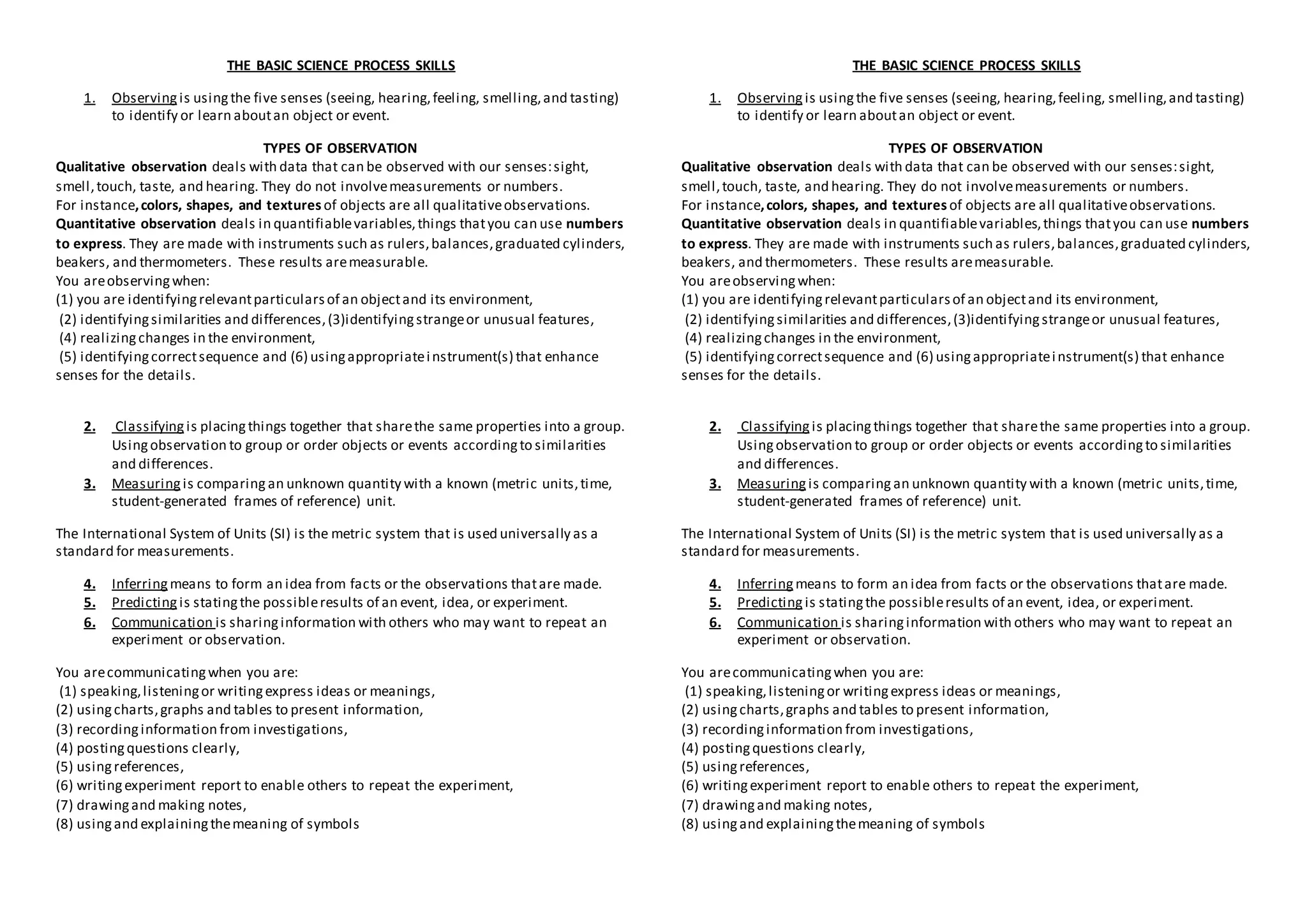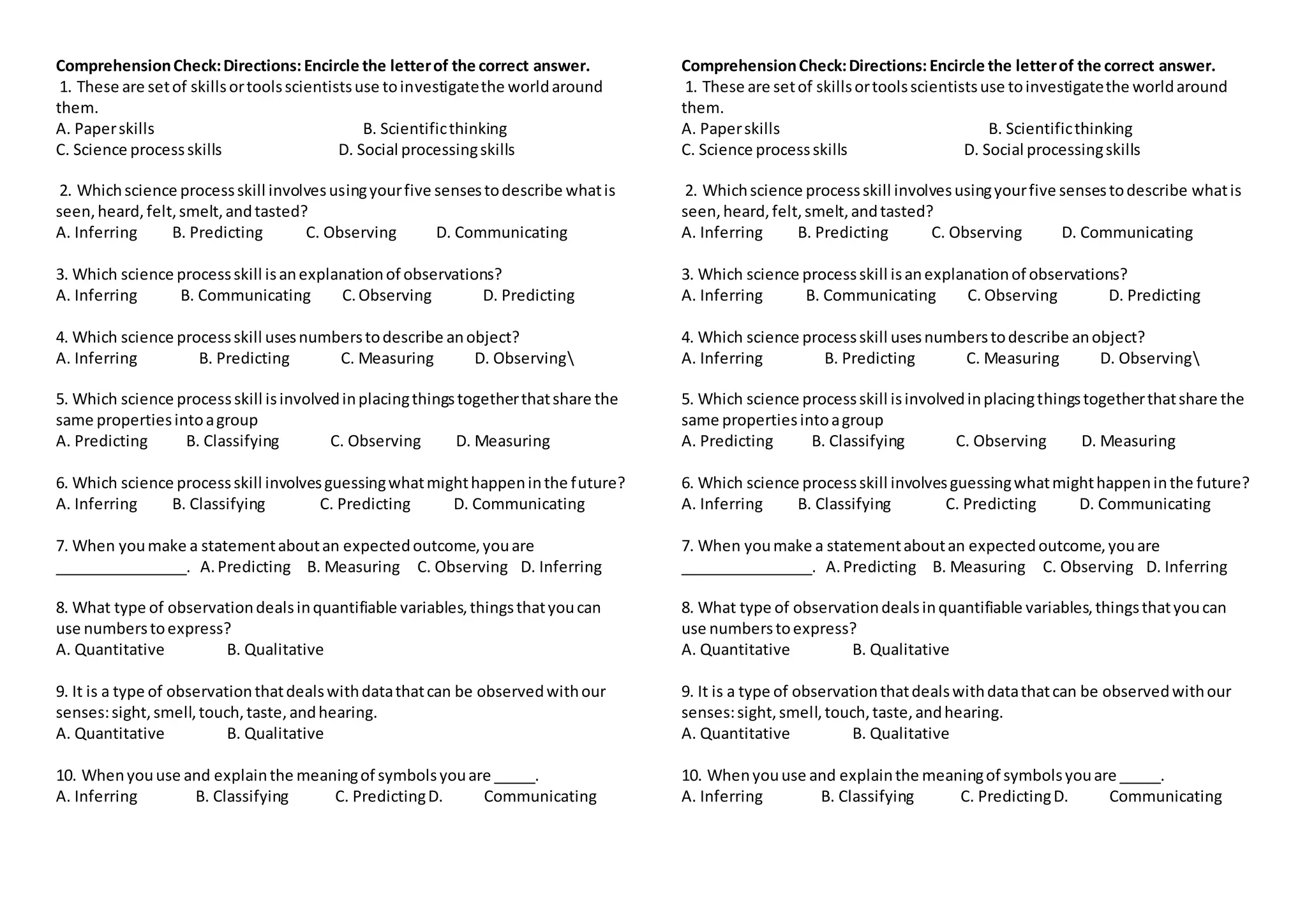The document discusses the basic science process skills which scientists use to investigate the world. It describes 6 key skills - observing, classifying, measuring, inferring, predicting, and communicating. Observing involves using the 5 senses to identify objects and events, and can be qualitative or quantitative. Classifying involves grouping objects by similarities and differences. Measuring uses standard units to quantify observations. Inferring forms ideas based on facts and observations. Predicting states possible experiment outcomes. Communicating shares information to allow others to replicate experiments or observations.

